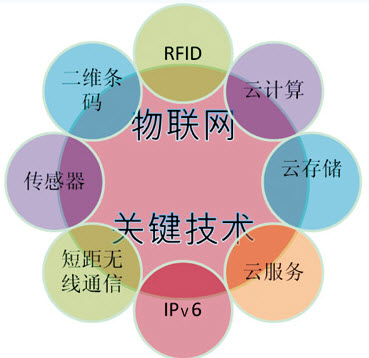Since 2013, the integration of sensing technology, cloud computing, big data and mobile Internet, the global Internet of Things application has entered a stage of substantive promotion. China has also initially established a “vertical integration†of the Internet of Things policy system, and has formed a relatively complete The Internet of Things industry system.

The Internet of Things presents a new development trend
In 2014, China's Internet of Things industry showed new features and trends. The first is to initially establish a "vertical integration" policy system, and "market-led development" is getting better. The top-level policy frameworks such as “Guiding Opinionsâ€, “Action Plan†and “Working Points†of the National Internet of Things Development and a series of supporting policies have been formulated and launched one after another, and the “one-in-one†IoT policy system has been initially established. “Application demonstration stimulates market demand, market demand drives industry development†has become a trend, and “market allocation resources†and “market-led development†are getting better.
Second, the industrial highland has accelerated its rise and the industry has been comprehensively promoted. China has initially formed various industrial links and industries covering chips, components, software, system integration, telecom operations, and Internet of Things services, and a relatively complete Internet of Things industrial system, as well as the Yangtze River Delta, the Pearl River Delta, the Bohai Rim and the Midwest. In the large IoT industry gathering area, industrial cooperation has been further promoted.
Third, the “leading effect†of industrial innovation is further highlighted, and the application of Huimin continues to deepen. The integration of the Internet of Things and traditional industries has further deepened. Innovative technologies based on the Internet of Things, such as industrial cloud platforms and industrial big data, have become important engines for the transformation and upgrading of traditional industries and the real economy. In the field of people's livelihood, fusion applications based on mobile intelligent terminals are constantly emerging. As of August 2014, the market for IoT applications in China's transportation, logistics, environmental protection, medical, energy, security and other fields has reached nearly 100 billion yuan.
Fourth, the deep integration of innovative technologies and the accelerated development of smart cities. With the integration of Internet of Things, cloud computing, big data, and mobile Internet, smart cities are accelerating and the connotation of construction is deepening. By the end of 2013, more than 400 cities across the country had started smart city construction. Urban development is accelerating into a new era of intelligent information interconnection, intelligent technology integration, rapid rise of smart industry, and efficient and convenient service.
The fifth is Wuxi IoT application file upgrade, smart city construction leading the country. It is reported that since 2014, Wuxi National Sensor Network Innovation Demonstration Zone has accelerated the gathering of R&D resources and innovation elements, the business model continues to innovate, and the market operation mechanism has been continuously improved. In the first half of this year, the growth rate of Wuxi's Internet of Things and related industries reached 42%. The application demonstrations in the fields of industry, environmental protection, medical care, transportation, security, water conservancy, logistics, and warehousing have achieved remarkable results, and the breadth of application and intelligence are leading the country.
Two major application directions of the Internet of Things
Where there is an IoT application, there must be an IoT gateway. Through the connection of sensors, radio frequency (RFID), micro-electro-mechanical systems (MEMS), and intelligent embedded terminals, IoT gateways will be used in intelligent transportation, environmental protection, government work, public safety, safe home, intelligent fire protection, and industrial Monitoring, environmental monitoring, street lighting control, landscape lighting control, building lighting control, square lighting control, elderly care, personal health, flower cultivation, water monitoring, food traceability, enemy reconnaissance and intelligence gathering. The protocols and gateways used by IoT gateways in different application directions are different, but their basic functions are to convert all kinds of information collected by the sensing layer into high-speed data through the relevant protocols to achieve high-speed data transmission to the Internet, and achieve certain management functions. .
Smart Home: The use of IoT gateways in the home is also a very representative IoT application. Nowadays, many household devices in the family are becoming more and more diverse. Some devices have remote control capabilities, such as air conditioners and televisions. Some water heaters, microwave ovens, rice cookers, refrigerators, etc. do not have this capability. Even if these devices can be remotely controlled, their control ability and control range are very limited, and these devices exist in isolation from each other, and cannot effectively share resources and information. With the development of the Internet of Things technology, especially the maturity of the Internet of Things gateway technology, the problem of interconnection and intercommunication among various household devices in smart homes will also be solved.
Vehicle Networking Gateway: One of the industries in which Internet of Things (IoT) has done a good job is considered by the domestic academic community to be the first practical IoT system, which has been demonstrated by the national expert group. The concept of the Internet of Things has a long history, but the specific implementation and composition of the Internet of Things has not formed a unified opinion. As one of the key technologies, IoT gateway still has many problems such as high development cost, long development cycle, incompatible software and hardware, difficult core technology, uncertain business model, and difficult to unify standards.
3 Way Power Divider,3 Way Rf Splitter,16 Way Power Divider,12 Way Power Divider
Chengdu Zysen Technology Co., Ltd. , https://www.zysenmw.com